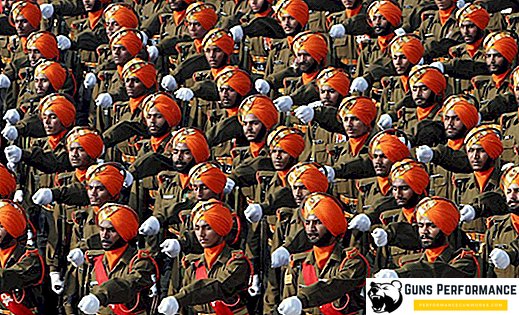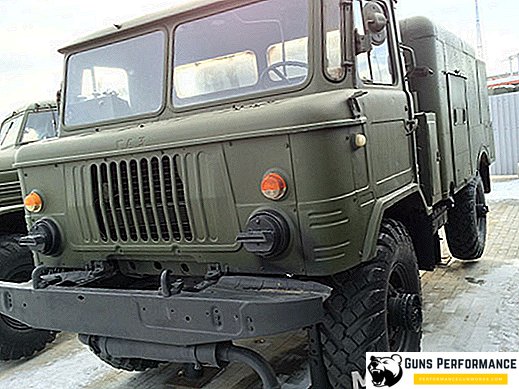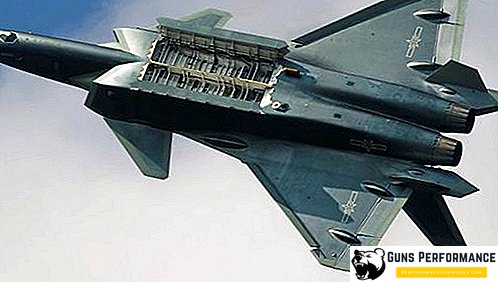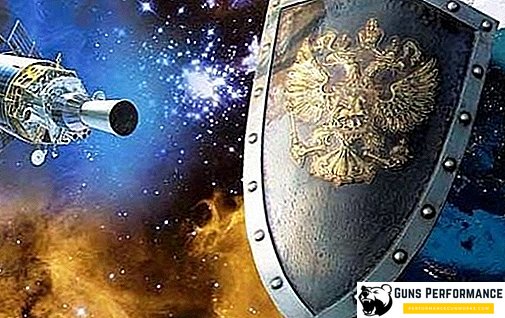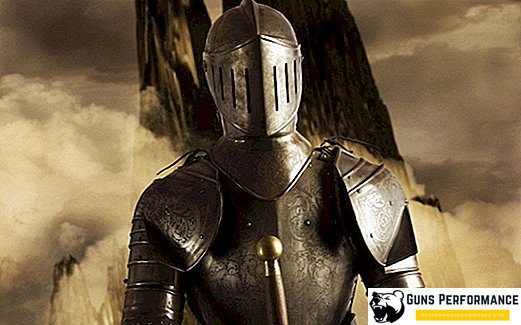
A classic symbol of the Middle Ages is the knight in armor and weapons in his hands. The formation of the culture of knights is directly connected with the feudal system. This is due to the fact that the knights often became feudal lords, thanks to the faithful service of the monarch, who later endowed them with land and money. After all, the medieval knights were primarily professional warriors. At the head of the squads or armies stood knights of noble origin.
Chivalry - the privilege of the nobility
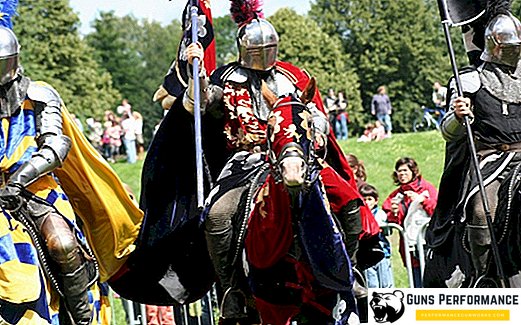
The war in the Middle Ages was a privilege of the upper class, which received for its service not only land, but also entire villages and cities. Naturally, a knight in medieval Spain, France or England was not interested in the appearance of competing knights. Many feudal lords forbade carrying not only peasants, but also merchants, artisans, and even officials. Sometimes the contempt of medieval knights for commoners came to the point of absurdity, proud feudal lords refused to fight with ordinary infantrymen, which often cost them their lives.
A real medieval knight (especially a knight in medieval Spain) had to come from a noble knightly family and know his ancestry, at least up to the fifth generation. Proof of the noble origin of the knights served as the family coat of arms and motto. The title of knights was inherited or was given by the king for military exploits.
The emergence of knightly estates arose in the 8th century with the Franks, when there was a transition from the pedestrian militia to a vassal cavalry army. Under the influence of the church, the medieval cavalry turned into an elite military class, which served the lofty ideals. The era of the Crusades finally turned the medieval knight into a role model.
The emergence of knightly cavalry
The first equivalent of knights can be called the riders' estate in ancient Rome. They fought on horses, often using high-quality armor, but the cavalry in the Roman troops was never the basis of the troops. Horse detachments were intended to pursue fleeing enemies, although the heavy cavalry of aristocrats could, if necessary, hit the enemy.
The beginning of the era of knights can be considered 4-6 centuries, when the Roman Empire fell under the blows of horse nomads. It was the Sarmatian horsemen using heavy armor and a shield that became the prototype of the knightly cavalry of Europe.
Since it was the nomads who became the privileged caste in the territory of the former Roman empire, it was their battle suit (armor and weapons) that was the basis of the combat ammunition used by the knights of Europe. However, since the newcomers were few, it took centuries before their martial traditions could spread to Europe.
Ancient Franks - the first knights
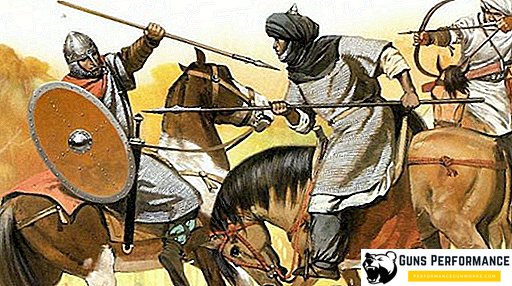
The history of the appearance of knights in the form in which they are now, is closely related to the Franks. It was here that there was an urgent need to create a mobile cavalry troops, as the cases of attacks by Arabs, who seized Spain, became frequent. The Arabs, who moved quickly on their horses, were inaccessible to the foot troops of the Franks. In addition, the peasants could not serve in distant regions, so the Carolingians began to create cavalry from the nobles of the state.
Since the crown was in dire need of horsemen dressed in armor, Karl Martel and his sons began to distribute church and crown lands to their warriors, demanding from them to carry on horse training. If during the time of Charlemagne, a large number of infantry participated in the war, then the wars under Louis 1 and Charles 2 took place completely without the participation of infantry.
In 865, each noble vassal of the king was supposed to have mail or scaly armor, a shield and a sword. In addition, the obrok population could get a position at the court of the lord, serving as a lightly-armed cavalryman. With due skill and good fortune, such a rider could deserve the benefit, having gone after that to heavy cavalry. The newly appeared feudal lord had to immediately acquire knightly armor, otherwise they could have taken the land. Thus, a new medieval estate of servants, who were obliged to participate in the war along with their feudal lord, appeared. The best servants received flax and became knights.
Such a transition into the knightly class was practiced until the 12th century, after which, by the decree of Frederick 1 (in Germany), the knights became a fully hereditary class. Peasants were forbidden to wear a sword, shield and spear, and merchants had to tie the sword to the saddle, but not to gird them.
Medieval knights in different countries of Europe
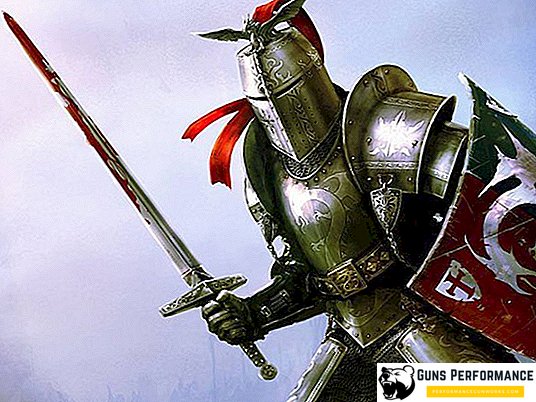
Each European country had its own peculiarities concerning the knightly class:
- In Germany, by the end of the 12th century, becoming a knight was not easy. If earlier a knights applicant could prove his origin in a duel, then after the publication of the "Saxon mirror" a knight could be considered only one whose father and grandfather were knights. The Constitution of Frederick 1 forbade peasants and priests (and their descendants) from carrying a sword;
- If we talk about French knights, then most often these were rich feudal lords, since the second sign of nobility was the dedication to the knight class. Although the war often helped to get into knights and ordinary people, it was difficult for them to purchase a set of armor, which in medieval society cost as the annual income of an entire village. The unspoken rule of knight initiation in France was the presence of a claimant. Wishing to get into the knights of merchants and citizens could buy a plot of land, automatically falling into the estate of feudal lords. Already in the 13th century, the purchase of land by people of ignoble origin was heavily taxed, although the knights could still be reached through the title award by the king;
- Medieval England was constantly torn by internal wars, and besides, England was one of the main targets for the Scandinavian conquerors. This left a very significant imprint on the formation of the knightly class of England. Kings Henry 3 and Edward 1 demanded that all Lennians be obliged to be knighted;
- The Spanish peninsula was constantly at war with the Arabs. This made the local knights the most skillful warriors of the Middle Ages. Many knights rode across Europe, hoping to help Christian brothers in their endless wars with the Arab invaders.
Even at the time of the birth of chivalry, the church had a great influence on this class. Initially, in the church, the knights took the oath of allegiance to their king, then they took the oath to serve the church. The ministry of the church meant to be just and merciful, not to violate the oath of his king and to carry the Christian morality to the pagans.
Raising a real knight
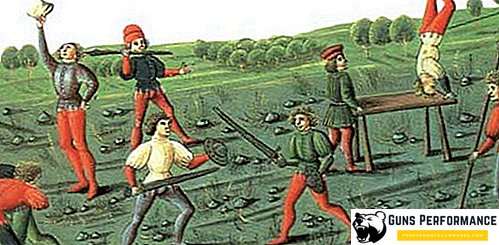
Future knights began to cook since childhood. The training began at the age of 7 and lasted until the age of 21, when the young man was officially knighted. At first, the boys were taught to stay in the saddle, then - to wield a weapon. Armor was not given to children, although there are cases when rich feudal lords ordered a reduced set of armor that exactly copied the armor of adult knights.
In addition, the children of noble landowners studied:
- Swimming (when the boy grew older, he had to be able to swim in full combat gear);
- Combat without weapons;
- Graceful manners;
- Strategy and tactics;
- The art of capturing locks.
Soon the boys became pages at the court of the king or the mighty seigneur. Despite the fact that the pages were sported in beautiful costumes, their training became more difficult and more exhausting every year.
Grown-up pages went to serve the knights as squires. Their task was to accompany the knight in all his battle campaigns. The squire had to keep track of the knight's suit and armor, wear his shields and weapons and ensure that everything was in immaculate condition.
Only after this, young people were knighted and were given the right to wear the family coat of arms on the field of their shield.
Since, in addition to war, only hunting was considered an occupation worthy of a knight, young people were taught all the tricks of this business.
Code of Honor of the Medieval Knights
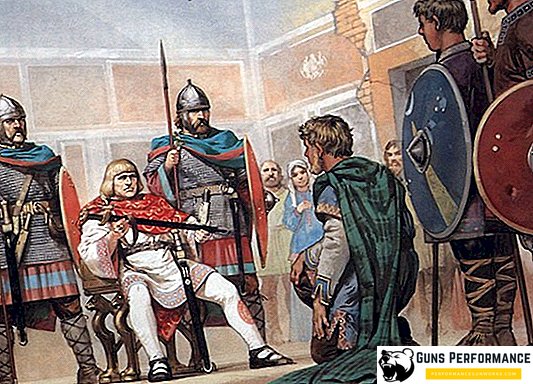
Among the medieval knights, solidarity was extremely developed. One of the clearest cases of such solidarity occurred during the war between the Franks and the Saracens. Before the battle, one of the best knights of Charlemagne summoned a Saracen knight to a duel. When the French knight was captured by deception, the Saracen voluntarily surrendered to the enemy, so that he would be exchanged for a knight captured by deception.
The code of knightly honor is known to us from numerous written sources. The knight’s code is based on:
- Loyalty to his master;
- The cult of the Beautiful Lady;
- Serving the ideals of the church.
The ministry of the church led to the creation of knightly orders. They appeared during the Crusades. Knights in such orders were considered Crusader monks and wore robe over their armor. In addition, their shield was decorated with the emblem of the cross.
Valor of the Knights
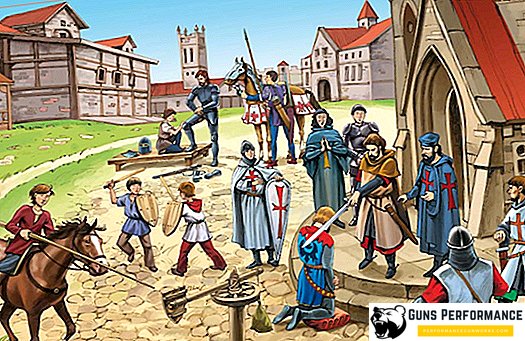
Each medieval knight should strive to have the following qualities:
- Courage in battle (a real knight, without flinching, could fight with an entire army);
- Loyalty (implies loyalty to his master);
- Generosity;
- Moderation;
- Refinement in communication.
The main knightly commandments were as follows:
- Always stand in defense of the interests of the church;
- Help the weak and disadvantaged;
- Fight for your country and the king;
- Keep your word;
- Fight evil in all its manifestations.
Naturally, a rather small percentage of the knightly class possessed a set of such qualities, but many sought precisely this ideal.
Weapons and tactics of medieval knights
If the sword, shield and spear were always the main weapon and protection of the knight, the armor gradually evolved over the centuries. Starting with chain mail and light shields in the early Middle Ages, in the 14th century, the protection of the knight was a complete armor and heavy shield.
With the development of armor, the weapons of the knights evolved. Swords began to be used for piercing strikes, which made them heavier. Spears, too, have become more massive. Only the battle axes remained virtually unchanged, their power was still sufficient both for cutting through mail and for cutting through solid armor.
In the battle of each knight was accompanied by squires, whose task was to help the knight during the battle. Rich feudal lords often took into battle their own detachment of loyal people.
The blow of knightly cavalry was an iron wedge, crushing an unprepared enemy in the blink of an eye. Unfortunately, for a sufficient run-up the knightly cavalry needed a flat platform, so knightly clashes occurred on the plains.
In peacetime, the knights trained in tournaments using blunted weapons.
Knight castles
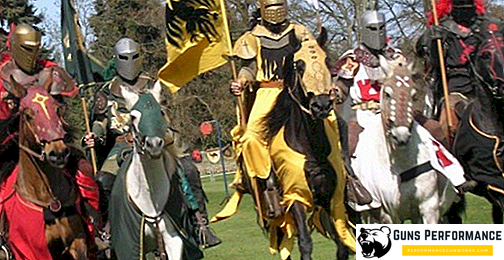
Since the Middle Ages was filled with wars and skirmishes, each knight wanted to build his own castle. The construction of such a fortress required huge financial investments. But the finished fortress became the center of life of the whole locality. It was here that fairs were held, merchants and artisans gathered here, who gradually built up the neighborhood with their houses and trading shops. In case of danger, the knight could open the gates of his castle and shelter everyone who wanted them behind impregnable walls.
Some castles deserved notoriety, during the times of the “savagery” of knights, they became real predatory nests, from where the knight-robber attacked merchants passing by.
The era of the knights ended shortly after the appearance of firearms. The bullets easily pierced even the best armor, so it became impractical to wear heavy armor. Despite this, the knights forever remained in the hearts of people, symbolizing honor and dignity.



